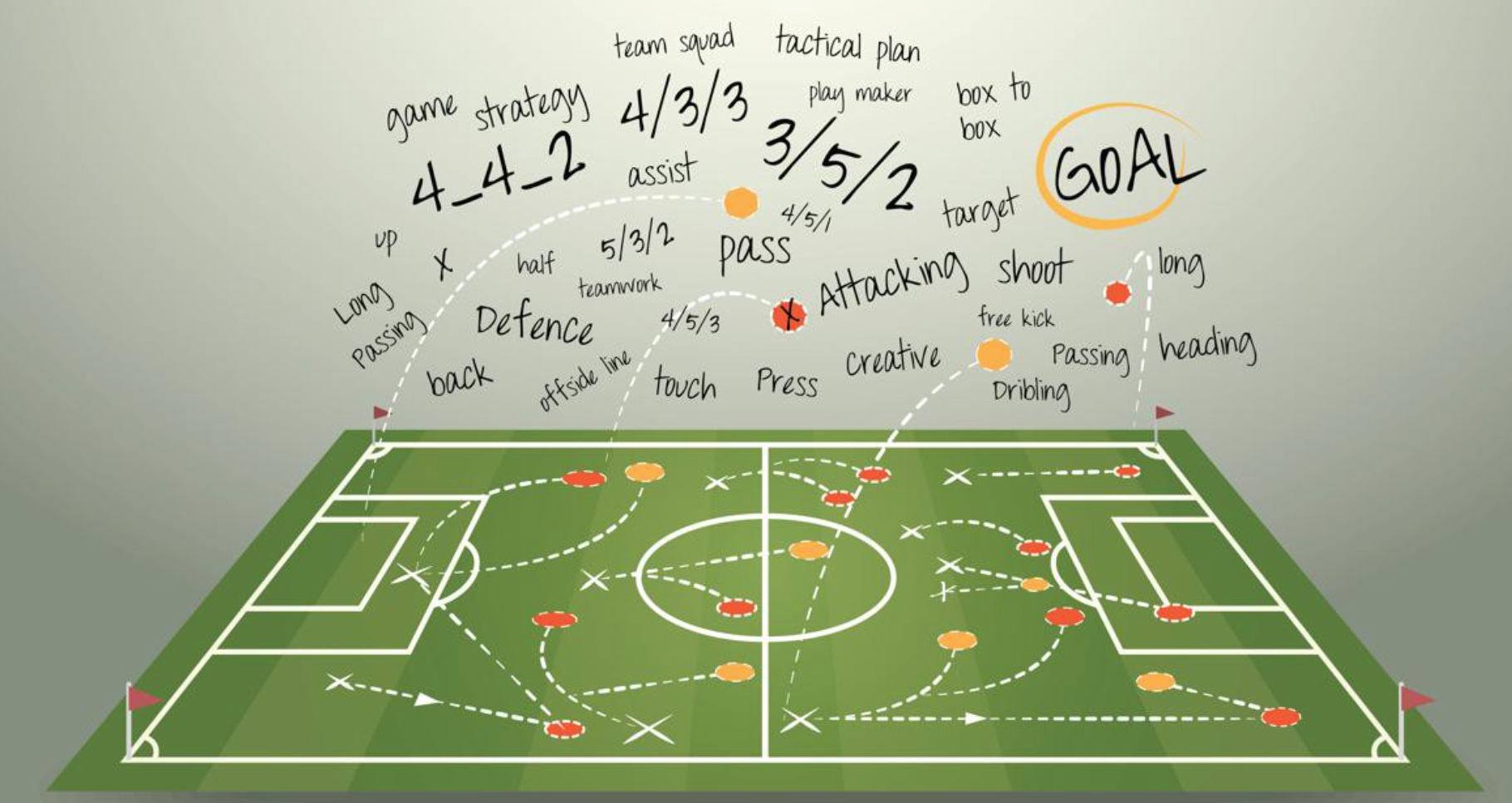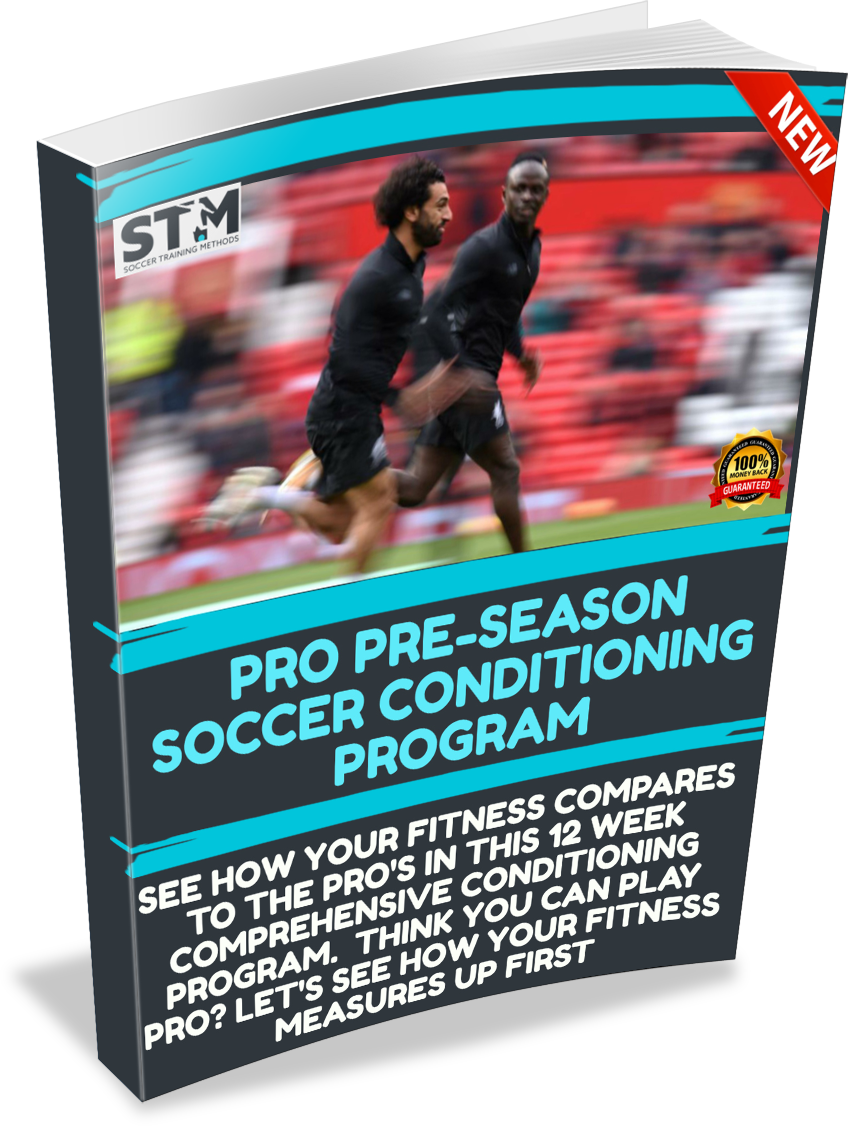- Home
- Soccer Strategy
Soccer Strategy Time! Keep It Simple Stupid!

Checkmate! If you feel like brushing up on your soccer strategy knowledge or want to know tactics that pro coaches and players use then you’ve come to the right place.
Different styles of play, philosophies and strategies of high level teams that employ high level specific strategies throughout the course of a season. Not loving the current soccer strategy of your team?
No worries have a look below to freshen up your thoughts and see if any of them fit in with what your teams best qualities are.
Top 5 Most Common Soccer Strategy Used In Today's Game
Possession Or Tiki Taka (Barcelona & Man City)
|
|
|
- This is the philosophy of these clubs and essentially it is dominating the play with possession of the ball (whether it is meaningful possession or not).
- The idea in attack is to create lots of numerical advantages around the ball to draw the defence in before playing it by them. Defensively the strategy is the longer we have the ball the less they have it and the less time we need to worry about defending.
Low Pressure or Park The Bus (Atletico Madrid)
- Putting all your players behind the ball and sitting in your own half is a form of low pressure.
- This is inviting the team to come into your half and try and break you down as your team sits in what's known as a low block and is compact from defence to strikers with about 5 - 7 yards between each line.
- This is also a great way to open up space on the counter attack because the team with the ball has left lots of space in behind them although they are deep in your half.
High Pressure or Gegenpress (Liverpool)
|
|
|
- Whether it's with two or three players in your forward line applying pressure high up the field deep in opponents half can be a strategy to create turnovers.
- Although you leave some space between your lines or in behind, using a high pressure system can be a great strategy if a team isn't strong technically in their back line or if you haven't created a lot of offensive chances this can act as your playmaker for the day.
Counter Attack (Real Madrid & Tottenham)
|
|
|
- Welcome to the wonderful world of Harry Kane and Son. These masters of counter attack sit patiently in their own half defensively then spring into action when the opponent loses the ball.
- If you have speedy strikers or wingers this could be a great strategy to implement. Much like a counter puncher in boxer this strategy works best when you invite a team to play in your own half before uppercutting them the other way.
Counter Press (Man City & Barcelona)
|
|
|
- The counter press or 5 seconds press is a strategy used immediately after you have lost possession of the ball.
- The thought here is when you have the ball you are spread out trying to keep the ball (which is actually your worst defensive structure). So as soon as the team with the ball loses it they now have 5 seconds to press the ball and closest man to them to win it back.
Top 5 Things To Consider When Deciding On Your Soccer Strategy For A Game Or Season
The Qualities Of Your Player And Team
- By far the most important factor to consider when determining a strategy is focusing on you and what your team can and can't do.Too often we worry about what the other team does well and neglect what makes our team great.
- Make slight adjustments to the opponent but stay true to who you are or your team will feel like you have no faith in them.
- Some examples may include if you have technical small team you may want to play possession based soccer so you aren't defending as much and use posession as your mode of defence.
- Perhaps you have a slow back line you may want to sit deep in your own half defensively so they are always in good position to win challenges.
The Opponent
- Of course you need to consider what the opponent's strengths and weaknesses are. Are they a very direct team do you want to press them to stop the supply or play with an extra center defensive midfielder to win aerial balls?
- Maybe if they are a speedy team you don't want to give them space to run into so you sit deep with your defensive block.
- Each opponent needs a unique soccer strategy so be prepared to be flexible.
The Field
(Size, Surface & Condition)
- We've all played on fields with big holes, dead grass, hard as rock. Not to mention the ones that look huge and wide and the other ones that are so tiny and narrow.
- Consider the field dimensions and condition of the field when implementing the strategy you want to use for your own team and against your opponents.
- Narrow field maybe you need to play direct or start launching some long throws into the box.
The Weather
- It would be nice to play Tiki Taka football with nice 5 yard passes all game long but if there's a downpour of rain or snow or worse off wind you may need to think about your approach.
- If the weather is so bad the opponent can't make two yard passes maybe you change your strategy to press them high up the field to force turnovers and get them out of their rhythm.
Past Success/Failure
- If it ain't broke don't fix it! Sometimes as coaches we try and implement some new fancy strategy that we saw on TV or saw online when the best strategy is one that has worked in the past.
- Think about similar teams or maybe it's the same team you are playing against and try and pick and choose what has and hasn't worked and look to build off of that.
- Emphasize the strategies that have worked, remove the ones that didn't and come up with a new but similar strategy that has worked in the past.
What's The Difference Between Soccer Strategy, System And Formation?
There is often confusion and overlapping thoughts between soccer strategy, system and formation. Are they the same? Can you have one without the other and so on.
To make it as simple as possible formation is the way you line up and the spaces on the field you occupy in attack and defence (4-4-2 for example).
System is how you operate within the formation (for example total football, positional play, wing overloads)
Strategy finally is how you use the 4-4-2 and it can very from game to game based on opponent and other conditions (for example, counter attack, possession based, direct, high pressure or low pressure defence to name a few).
Is There Really A Lot of Strategy in Soccer?
The team with the best players will always win, no matter the strategy of the opponent right? Oh how wrong we are. Sure having great players goes an extremely long way but without discipline, organization and a detailed strategy going into a match even the most talented teams can be defeated.
Sure X’s and O’s matter and there is a lot of strategy involved in a teams preparation for a match, but it’s no quantum physics. It’s all about direction, a team that has a planned direction for a desired outcome will always be better off then the team that just shows up and goes through the motions.
What’s The Best Soccer Strategy?
Read carefully now, here is the secret to all of soccer and the strategy that will win you every game. If you ever hear somebody tell you this you might as well buy magic beans off of them while you’re there. The secret is (drumroll please) there is no ONE best strategy.
Your soccer strategy or tactics largely depend on who your opponent is, the strengths of your own team and the situation at hand. This tends to change from game to game and throughout the course of a season.
Although sides do have strategies and tactics that work best for them and are a staple of their team, no one is best. The best strategy is the one that gets the desired performance from your team and desired outcome from the match and that constantly changes.
If your'e looking for some more information on strategies in European Football have a look at this article which discusses an Analysis of Strategies in Soccer as a Function of European and Domestic Competition.

What Types of Strategy Exist In Soccer?
Possession Oriented
- We have the ball all game so you can’t score mentality. You will see team such as Barcelona, Spain and Man City employ this tactic for large periods during a match.
- Keeping the ball, not forcing anything waiting for the right moment to slash the back line. By the time the opponent creates a turn over they are so dead tired from playing defence for so long that they give it right back to you.
- This soccer strategy can be physically and mentally deflating for the defending side.
Counter Attacking
- It says it in the name, sitting back in your own half and sucking a team in. Once the ball is turned over, you then counter your opponents by exploiting the space in behind them as they are caught on their heels.
- A team with speed, discipline and clinical finishing is required to properly execute this strategy. One mistake, miscue or error in judgment can make 89minutes of hard work go to waste. Choose your soccer strategy wisely now.
Defensive
- The team defends as a unit (yes that means you up top too).
- Outside backs don’t look to join the attack as much.
- One center mid always stays home.
- Striker is the first line of defence.
- Neat and tidy in the back with clearances.
- Better safe than sorry.
- Compact and discipline.
Offensive
- If you didn’t figure it out by now this soccer strategy depends on your team’s ability to go forward and create dangerous scoring opportunities.
- Combination play in the final third.
- Overlapping runs on the wings.
- Midfielders joining the attack and linking with the forward line.
- Constant offensive pressure on the opponent.
- Taking players on and not looking back.
High Pressure
- You will find this soccer strategy commonly used when a team feels their opponent is not strong at possessing the ball.
- Also commonly found in basketball applying high pressure on an opponent involves a team pressuring them as a unit and looking to cause a turnover.
- The idea here is to cause uncertainty and indecision to the ball carrier forcing them to make a poor decision causing to an error and loss of possession.
- This is also commonly used when a team wants to shift the momentum, put the pressure on one side or is down a goal and needs to get back into it.
Low Pressure
- Low pressure is siting back in your half waiting of the right moment to go “high pressure”. Sounds much more complicated then it really is. It’s high pressure just sitting back deeper in your half waiting for a mistake to pounce on. Also can be a great way to set up the counter attack.
- Staying tight and compact as a unit is the name of the game here, frustrating your opponents and making the best of your opportunities you do get at the other end.
Focusing on Exploiting Certain Players or Positions on the Field
- Attacking certain weaknesses of your opponents or strengths of your own team such as getting the ball in a certain 1v1 match up as much as possible.
- Maybe you want to attack the wide areas of the field or you want to play balls in the air versus a short back line.
- Whatever it is find your strength to exploit their weakness, then you really got a dynamic soccer strategy.
Professional teams use several if not all the strategies listed above in the course of a playing season. One day may call for an all out attack exploiting a weaker team where as another match may require playing bunker defence before going back home for the second leg.
Professional players get to the professional ranks because they have quality and already have a large skill set. Pro level coaches don’t use as much team in developing the player as they do getting a system for the team to perform in. This may mean trying several of these strategies until they find their own bread and butter “go to” strategy.
Is it Better to Have Just One Strategy?
I’ve always felt a great player can adapt to any system. This I believe is true for teams as well. Every successful team must be able to adjust their game plan slightly for every opponent.
Meaning that being a one trick pony won’t get the job done at the highest of levels. You must be versatile and able to apply any soccer strategy at any given time during the course of a year.






